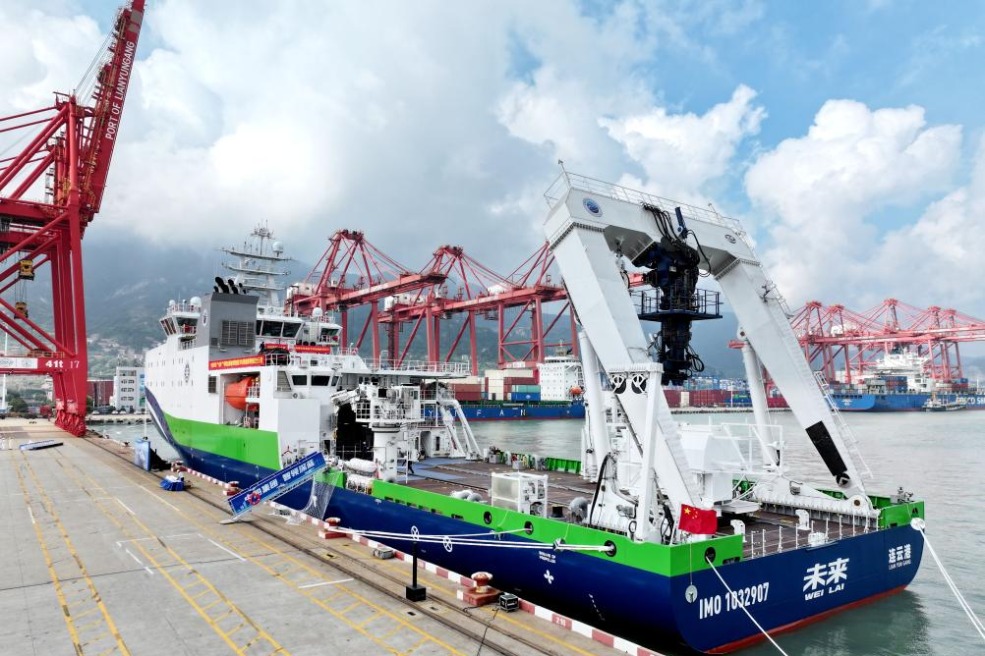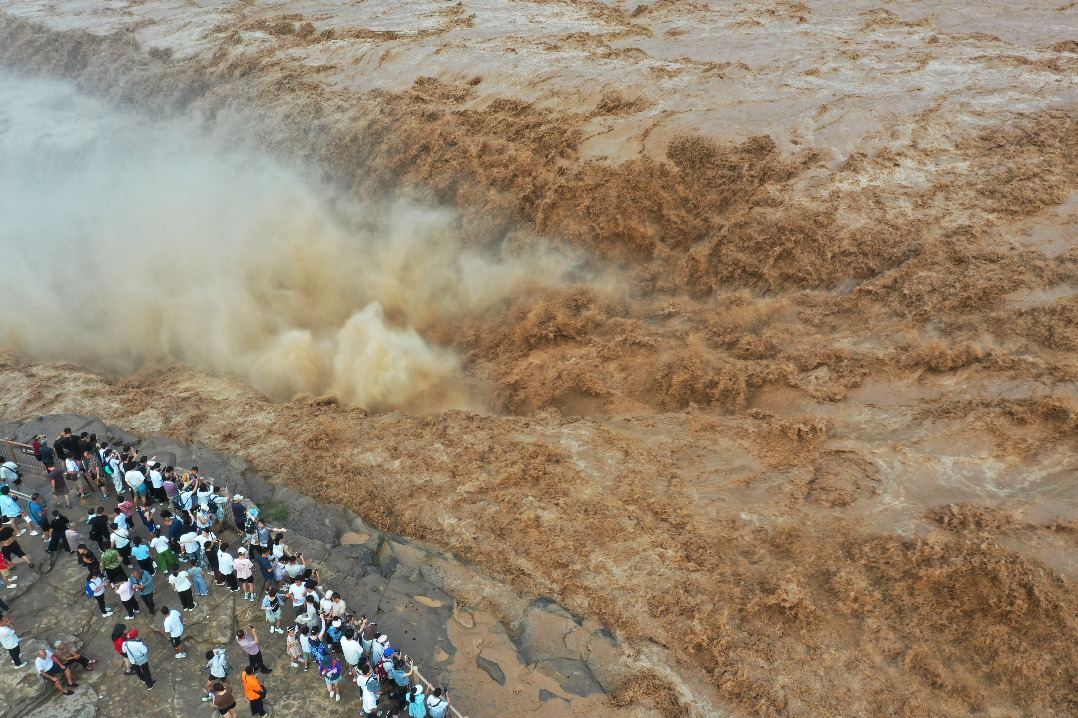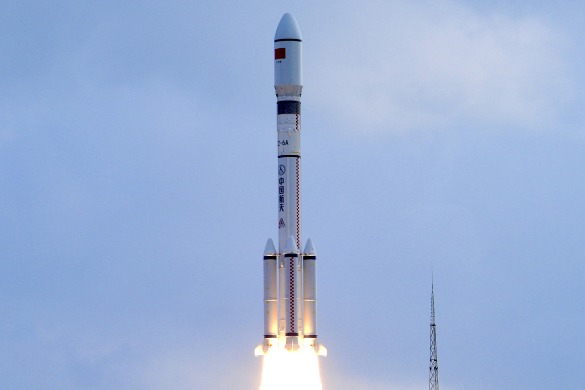Space lab re-entry expected on Monday

Craft could produce 'splendid meteor shower' as it burns up in atmosphere
Tiangong I, China's first space lab, will re-enter Earth's atmosphere on Monday, the national space agency said on Sunday.
As of Sunday, the space station was orbiting about 167 kilometers above Earth, according to the China Manned Space Agency. The agency's latest estimate said it will re-enter the atmosphere on Monday, though it did not specify a time.
Most of the station will burn up during re-entry, and any debris will most likely fall into the ocean and not affect aviation or human activities on the ground, according to an article published on the agency's WeChat-social media-account on Wednesday.
Such falling spacecraft do "not violently crash into Earth, like in sci-fi movies, but turn into a splendid meteor shower and move across the beautiful starry sky as they race toward Earth", the agency said in the article.
South Korea's National Space Situational Awareness Organization said on Sunday that the 10.4-meter-long Chinese space station is expected to re-enter the atmosphere some time between 4:12 am and 12:12 pm Beijing time on Monday.
Debris from the 8-metricton space lab could land anywhere between the latitudes of 43 degrees north and 43 degrees south-a vast belt of area covering everything from New Zealand to the American Midwest, according to the European Space Agency.
But it is still extremely difficult to accurately predict where, if anywhere, the craft would come down due to its shallow falling angle, interference from atmosphere, and a potential maximum speed of around 27,000 kilometers per hour, the European agency added.
On Friday, Chinese Foreign Ministry spokesman Lu Kang reassured reporters in a news briefing that China has been "highly responsible" and transparent in its handling of the situation.
"China pays high attention to the station's re-entry, and has been constantly updating the United Nation Office for Outer Space Affairs with new information," he said. "If there is a need, we will promptly be in touch with the countries concerned."
About 13,000 to 15,000 metric tons of space hardware has come down since space flight began in the 1960s, and not a single casualty has been reported, according to space agencies from China and Europe.
The re-entry process is typically divided into three phases. During the first phase, which happens around 100 km above ground, the drag from the atmosphere tears off solar arrays, antennas, and other external parts off a spacecraft, the Chinese space agency said.
The next phase starts at an altitude of about 80 km, where the main structure of the spacecraft disintegrates as pressure, friction, and heat increases. The fragments will keep burning, shedding most of their mass and volume in the process.
Only a small amount of the debris would reach the ground and mostly likely would fall into the oceans, which cover more than 70 percent of Earth's surface.
Tiangong I, also known as "Heavenly Palace", was launched on Sept 29, 2011, and has been a key part of China's plan to develop its own manned space station similar to the International Space Station by 2023.
It has completed six space rendezvous and docking missions with three visiting spacecraft. The first visit was by the unmanned Shenzhou VIII spacecraft in November 2011, as part of China's first space docking mission.
The second and third missions were both manned-Shenzhou IX in June 2012 and Shenzhou X in June 2013. Both of those missions had three astronauts and lasted about two weeks, during which astronauts tested the station's various systems and living conditions.
Huang Weifen, a researcher at the Astronaut Center of China, said Tiangong I has contributed greatly to China's space programs by providing valuable data on security, working, and living conditions for future astronauts.
"What goes up must come down," she said. "But the Chinese space dream will keep moving forward."
- Zhejiang leads in innovation, IP development
- Lotus sanctuary dazzles at wetland park in Chongqing
- Nearly 5,700 residents relocated amid heavy rain in Jizhou, Tianjin
- China to offer nationwide childcare subsidies
- China sees better air, water quality in H1
- Heavy-ion accelerator integrating into cancer treatment in China





































